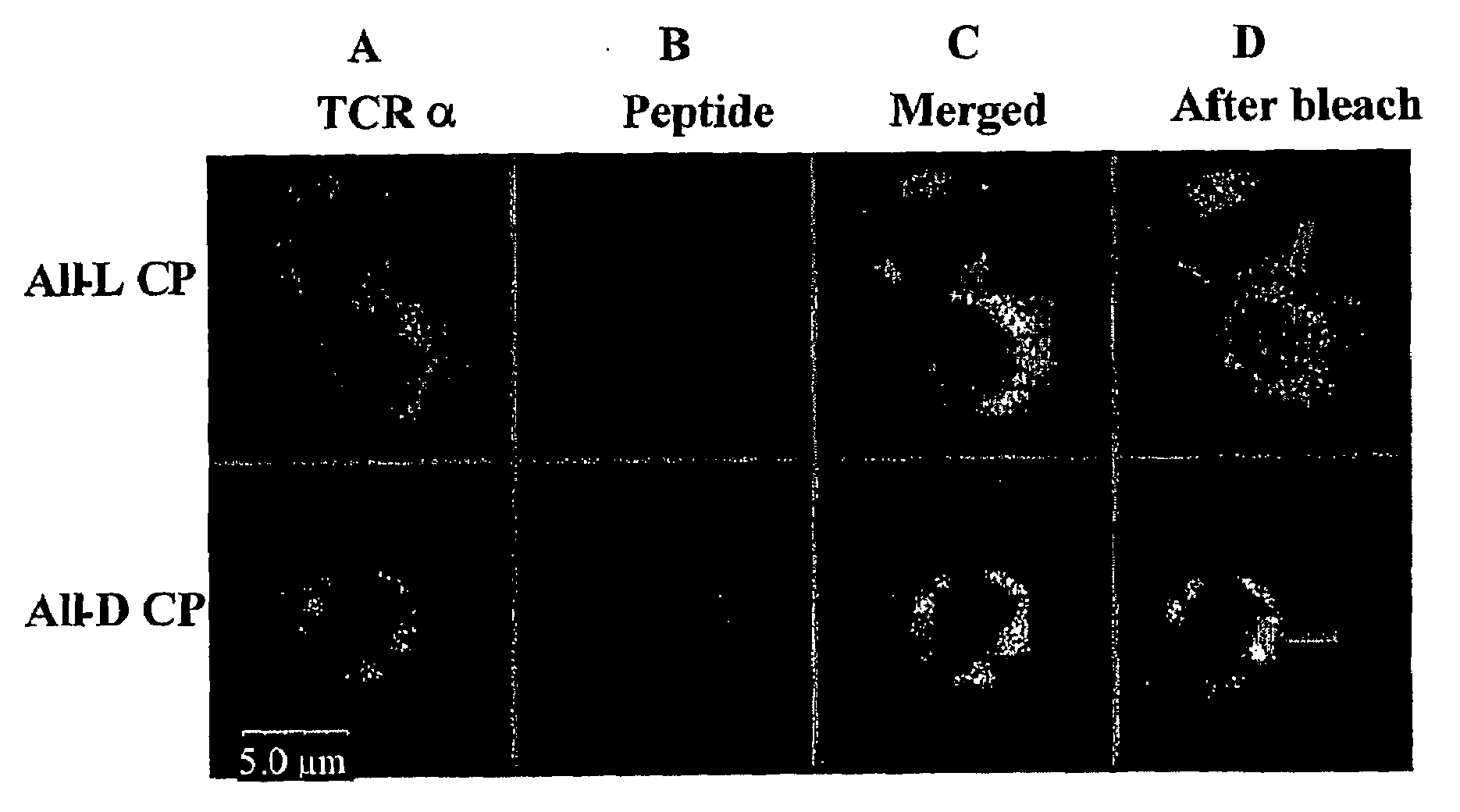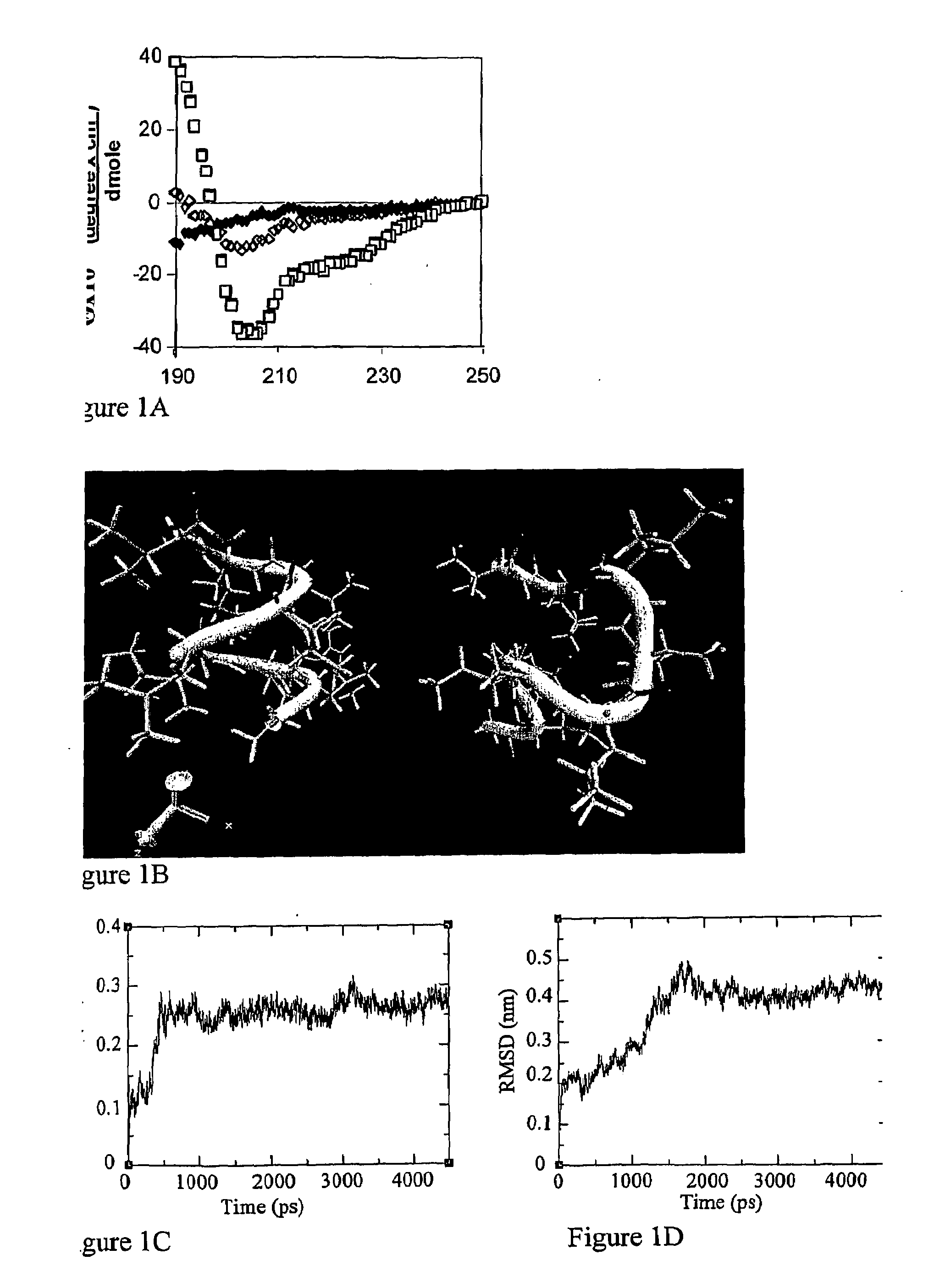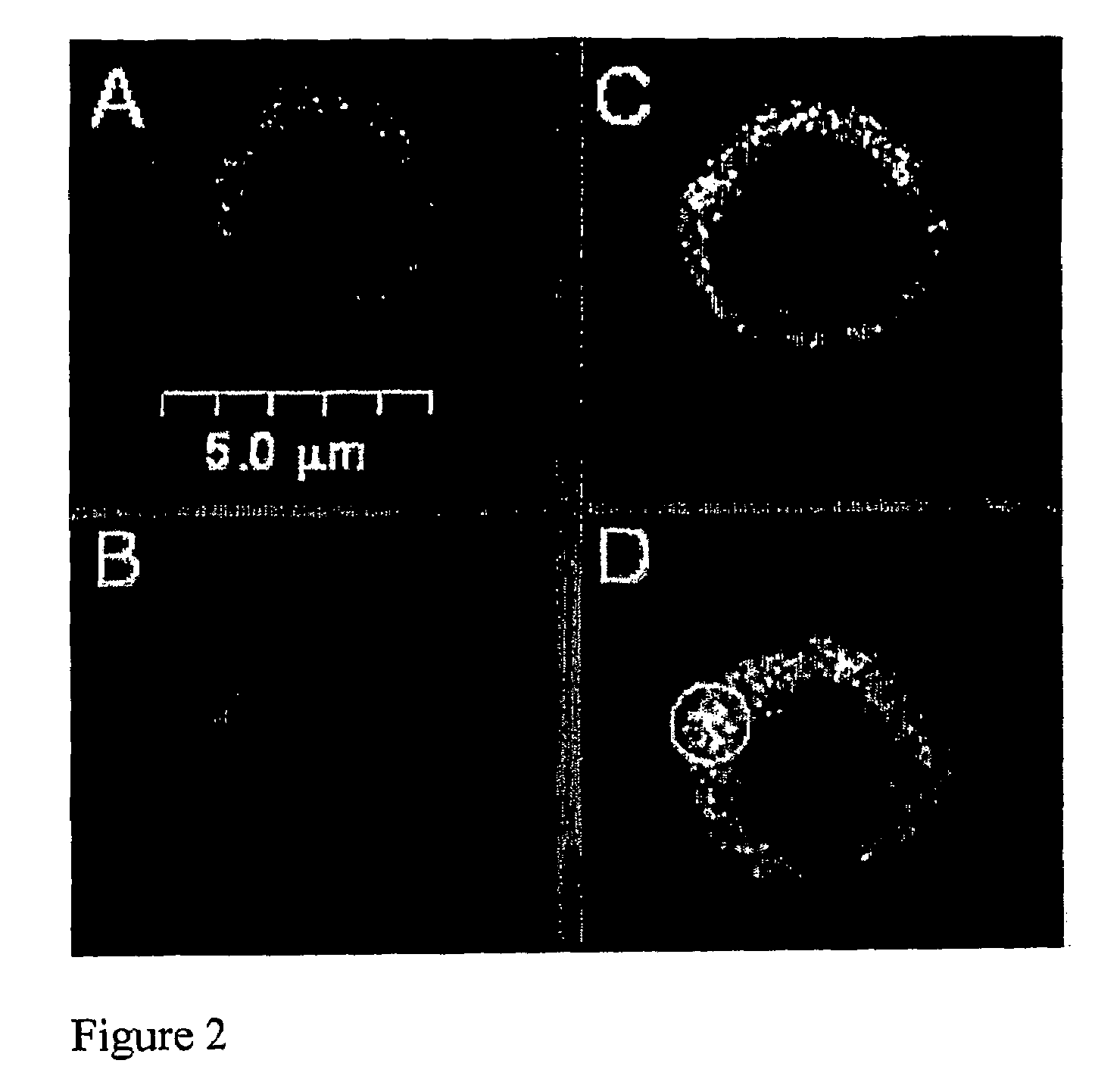Diastereomeric peptides for modulating t cell immunity
a peptide and t cell technology, applied in the field of diastereomeric peptides for modulating t cell immunity, can solve the problems of unreliable peptides, unreliable peptides, unwanted side effects,
- Summary
- Abstract
- Description
- Claims
- Application Information
AI Technical Summary
Benefits of technology
Problems solved by technology
Method used
Image
Examples
example 1
2D-CP Lacks a Stable α-Helical Structure
[0149]Recently, the present inventors have shown that the inhibitory activity of CP on T cell activation is independent of peptide chirality. To analyze the differential contribution of secondary structure and side-chain sequence to its ability to interact with the TCR / CD3 complex and interfere with T cell activation, the inventors have replaced the two positive residues of CP (Arg and Lys) with their D-enantiomers (2D-CP). The insertion of D aa in an L peptide has been described to destabilize the secondary structure while keeping the aa sequence (FIG. 1). To test for sequence specificity, the inventors synthesized a known mutant in which the two positive residues were mutated to glycine (Gerber et al., 2005; Manolios et al., 1997). The designation and aa sequence of the CP peptides used in Examples 1-5 are as follows:
All-L CP (wild type): GLRILLLKV (SEQ ID NO: 1).
2D-CP (diastereomer): GLRILLLKV (SEQ ID NO:2; D-aa are bold and underlined).
2G-...
example 2
The α-Helical Structure of CP is Not Required for T Cell Binding and Localization
[0155]The CP peptide has been described to insert itself into the CD3 / TCR complex and interfere with the activation of T cells triggered by their cognate antigen (Manolios et al., 1997; Wang et al., 2002; Wang et al., 2002b). The contribution of the secondary structure to the CP-CD3 / TCR interactions was analyzed by studying the localization of rhodamine-labeled 2D-CP and TCR-specific FITC-labeled antibodies (αTCR-FITC) on the T-cell membrane. FIG. 2 depicts the co-localization of αTCR-FITC and Rhodamine 2D-CP (FIG. 2), suggesting that the 2D-CP analog inserts into the T-cell membrane and co-localizes with the TCR, as was seen with wild-type CP (Gerber et al., 2005; Wang et al., 2002b).
[0156]To confirm these co-localization results, the inventors performed fluorescence energy transfer experiments between Rhodamine 2D-CP and αTCR-FITC. Using a 543 nm laser a point on the T-cell membrane that exhibited hig...
example 3
2D-CP Interferes with T-Cell Activation in Vitro
[0158]The co-localization studies presented herein (FIG. 2) suggested that the secondary structure of CP was not essential for its ability to insert into the T-cell membrane and interact with the CD3 / TCR complex. To test whether the secondary structure of CP contributed to its interference with the activation of T cells by antigen, the inventors isolated lymph node cells (LNC) from Mycobacterium tuberculosis (Mt)-immunized rats and activated the T cells in vitro with tuberculin-purified protein derivative (PPD) or with the Mt176-90 peptide. Both PPD and Mt176-90 have been reported to induce a strong T-cell proliferative response in the LNC of Mt-immunized rats (Quintana et al., 2002; Quintana et al., 2003). Both wild-type all-L CP and 2D-CP inhibited T-cell proliferation to PPD and to Mt176-90 in a dose-dependent manner (FIG. 3). Note, however, that at lower concentrations, the inhibition of 2D-CP was somewhat greater (p<0.02) than tha...
PUM
| Property | Measurement | Unit |
|---|---|---|
| Length | aaaaa | aaaaa |
| Hydrophobicity | aaaaa | aaaaa |
| Lipophilicity | aaaaa | aaaaa |
Abstract
Description
Claims
Application Information
 Login to View More
Login to View More - R&D
- Intellectual Property
- Life Sciences
- Materials
- Tech Scout
- Unparalleled Data Quality
- Higher Quality Content
- 60% Fewer Hallucinations
Browse by: Latest US Patents, China's latest patents, Technical Efficacy Thesaurus, Application Domain, Technology Topic, Popular Technical Reports.
© 2025 PatSnap. All rights reserved.Legal|Privacy policy|Modern Slavery Act Transparency Statement|Sitemap|About US| Contact US: help@patsnap.com



